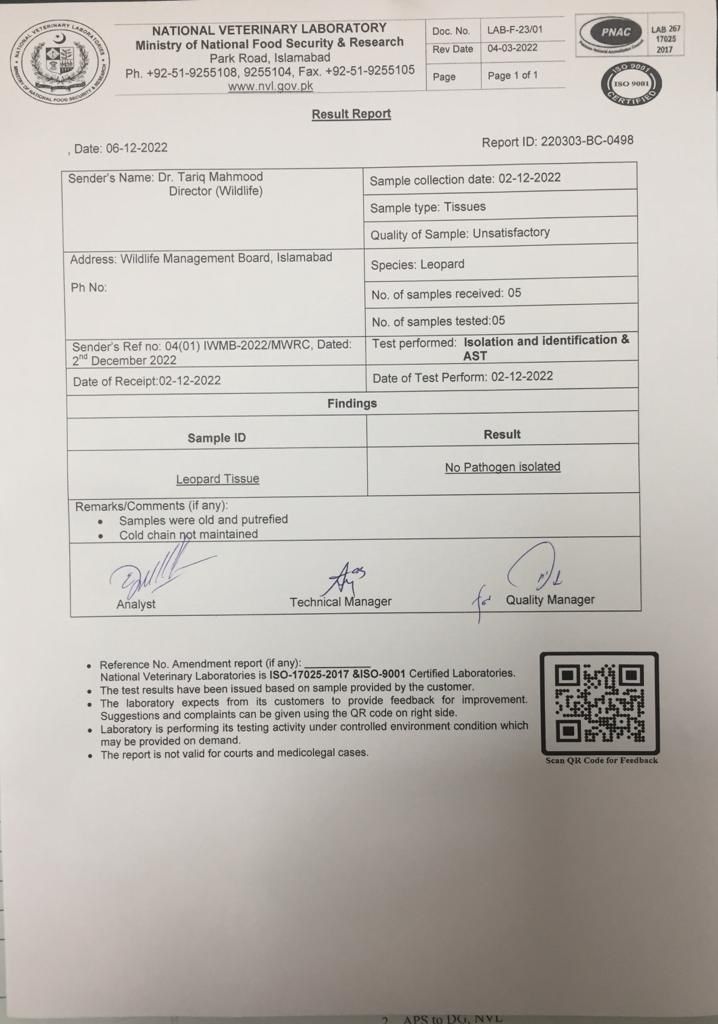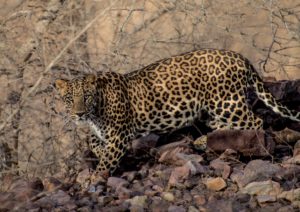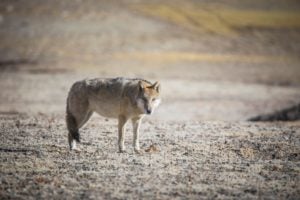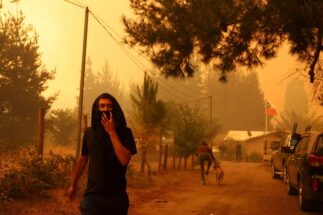“Until a few years ago, we had not even heard of leopards in our area,” says Aamir Kayani, a resident of Saidpur village on the outskirts of Islamabad, the capital of Pakistan. “But some time ago, we saw a female leopard with her cubs for several days. [This] created panic in the local population.”
Leopards were reported to have entered Saidpur village in November 2022 (although reports vary on the number seen). Kayani says the leopards attacked livestock on the roof of a house and killed at least one of the villagers’ cattle.
Saidpur is one of around 12 villages in the immediate vicinity of Margalla Hills National Park, just north of Islamabad.
Anis Ur Rahman, former chair of the Islamabad Wildlife Management Board and a founding member of the Himalayan Wildlife Foundation, says these leopard sightings are an “indication towards the improvement of the environment” in the park. “Now if any citizen goes to the Margalla Hills in the morning hours, the barking deer and other wildlife cannot remain hidden from their eyes,” he says.
Unfortunately, fear of leopards among local communities – as well as the realities of conflict between villagers and the wild cats – threaten to undo these gains.
Human-leopard conflict across Pakistan
Reports of leopards in the Margalla Hills area have been making the rounds since at least 2015, but increased after 2019.
Citing loss of livestock to leopards, villagers near the Margalla Hills were in 2021 reported to be leaving out poisoned meat for the big cats. In the last few years there have been two leopard deaths close to Islamabad. In December 2021, tissue samples from a leopard found dead were sent for an autopsy. While the report said no pathogen was found, it also labelled the samples as being in unsatisfactory condition, and noted that a cold chain was not maintained for the tissue samples, that they were old and had begun to rot. Such critical comments means that the autopsy report cannot be used as definitive evidence of how the leopard may have died. A second leopard was killed a year later, in a collision with a vehicle in December 2022 on the Taxila highway.

The deaths around Islamabad and potential for human-leopard conflict is mirrored in other regions of Pakistan. Mir Aijaz Talpur, deputy conservator of Tharparkar district in the south-eastern province of Sindh, says that two leopards – incorrectly reported in the news as cheetahs – have been killed by villagers in recent months, after attacking livestock. “Legal action has been taken against those who killed leopards,” Talpur says.
Shaista Ali, monitoring officer of the wildlife department of Pakistan-administered Kashmir, says that 30 leopards have suffered unnatural deaths in the last five years in Kashmir, while four human lives have been lost. Meanwhile, Sarmad Ali Shah, the district forest officer in charge of wildlife in Mansehra, in northern Pakistan’s Khyber Pakhtunkhwa province, says that three leopards have been killed in the last two years.
The largest population of leopards in Pakistan is found in Ayubia National Park and adjoining areas of Galiyat and Abbotabad in Khyber Pakhtunkhwa, located just north of the Margalla Hills (Galiyat also extends into parts of Punjab). Sardar Nawaz, district forest officer at Ayubia National Park, says that according to the Abbotabad Wildlife Department’s records, 112 leopards have died at the hands of people since 1993 in this region, but only three leopards have been killed in the last two years. He also says that “at least 15 precious human lives” were lost to leopard attacks in the region between 2000 and 2016.
Globally considered vulnerable to extinction, the leopard has declined markedly in Asia, where the species has disappeared from more than 83% of its former range. It is hard to get a comprehensive picture of the leopard’s status in Pakistan: there is no consolidated database of leopard numbers or deaths across the country, and each province or region gathers data in its own way, with some conducting surveys every two or three years, and others only every five years.
Restoring leopard habitat in Pakistan
Anis Ur Rahman remembers the excitement in 2019, when leopards were first photographed by a camera trap in Margalla Hills National Park. “We [decided to] seize this opportunity and provide ample opportunities for other species to thrive.”
While there had been occasional sightings by local residents over the years, most communities and administrators were of the opinion that leopards had disappeared from the area. In a study conducted in 2017-18, researchers found evidence of about six leopards in the Margalla Hills area through their scat (droppings) and territorial markings, but did not have enough camera traps to comprehensively survey the area. The study noted that, at that time, while some communities had reported depredation of their livestock, they had not seen leopards.
This has changed substantially since, with camera traps documenting the leopards in the area, and an increase in both sightings from locals and reports of conflict.
Rahman says that strict measures were taken to prevent cutting of trees and illegal hunting in the park after the leopards’ presence was confirmed. “We increased the number of our guards there. We tried to minimise human intervention and imposed a ban on the movement of people in some areas. Vehicular movement was prohibited in some areas, and [tree] plantation was done.”
“Today we can confidently say that the ecosystem is being restored in Margalla Hills,” says Rahman, adding that prey numbers have increased, and leopards have followed.
Nawaz, of the Abbottabad Wildlife Department, notes that their last survey, in August 2022 – one is conducted every three years – revealed at least 40 pairs of leopards in the Galiyat area. The previous survey counted 35 pairs. This area abuts Margalla Hills.
According to Rahman, the re-emergence of leopards may have helped to control populations of wild boar, which have been known to cause damage in Islamabad. “The wild boar is the favourite prey of the leopard. Due to the leopards, the wild boar population is [now] kept under control,” he says.
How to reduce human-leopard conflict in Pakistan
Shaista Ali of the Kashmir wildlife department says that the main reason behind human-leopard conflict in Kashmir is the presence of people near leopard habitats, and their shared dependence on the forest and natural resources.
“Humans use forest wood for fuel and furniture. Some people are involved in illegal wildlife trade. Due to which habitats of leopard and wildlife are being destroyed,” she says. In Kashmir, the problem peaks in the winter months, as leopards and their prey descend from the high mountains to areas with more human activity, which can lead to leopards preying on livestock.
Zafar Iqbal, a supreme court lawyer who works on environmental issues says that land use is the most pressing challenge for Pakistan’s wildlife – as the country’s urban population expands, so does potential profit for real estate companies. He says there are a number of pending cases in the courts against encroachment in Margalla Hills National Park, and that the situation is similar in other areas. Anti-encroachment drives in the Margalla Hills have resulted in dozens of structures being razed.
Wildlife authorities can only protect the habitat of leopards from further encroachment if the government fully supports them in managing real estate expansion, says Iqbal.
Shah, the district forest officer of Mansehra, agrees. He says the best way to protect Pakistan’s leopards is clear legislation that demarcates which areas and forests are only for wildlife, and to which humans also have access.










